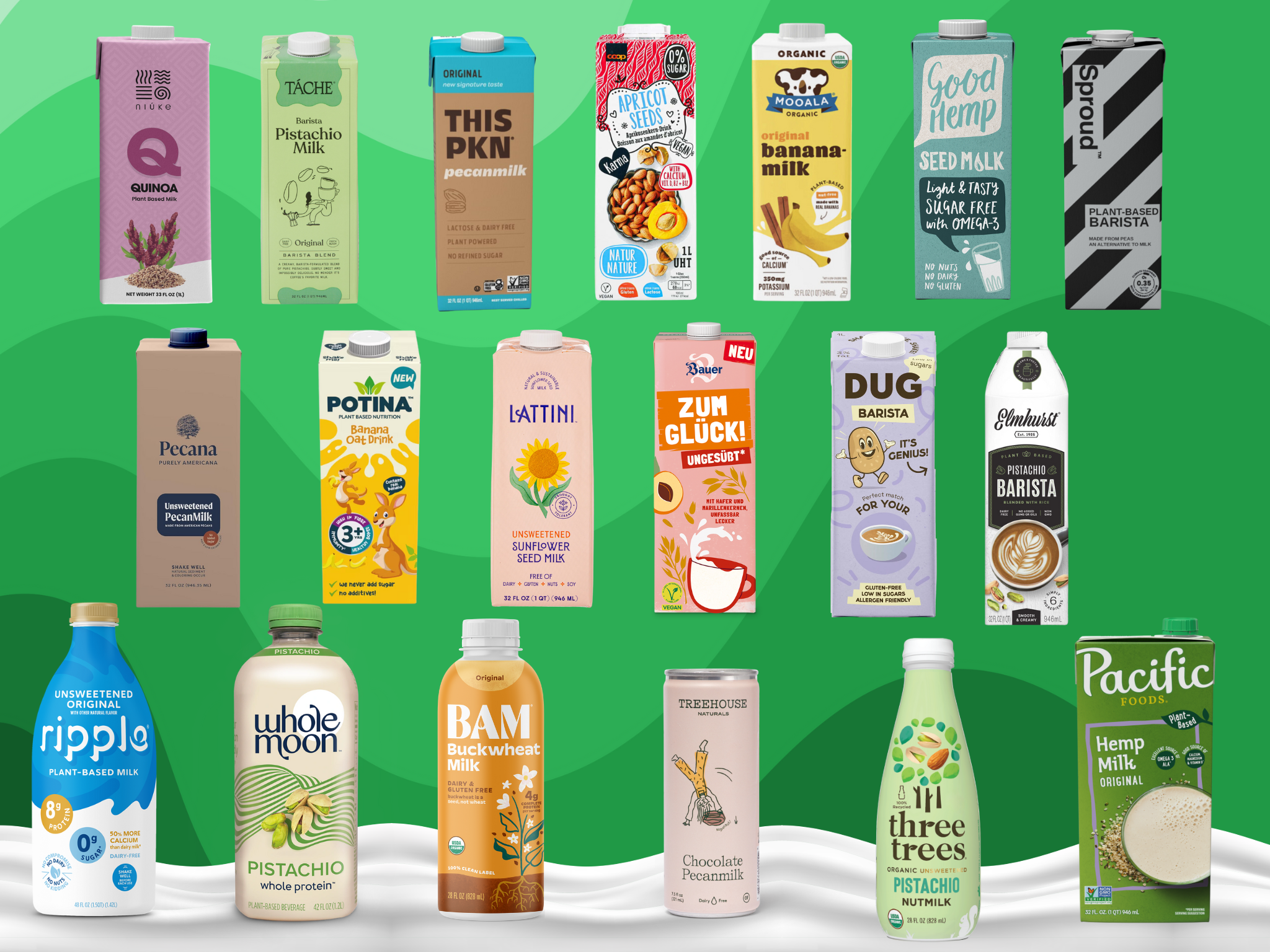Trend Report: From Potatoes & Bananas to Watermelon Seeds, Meet the New ‘Alternative’ Plant-Based Milks
8 Mins Read
Peanuts, potatoes and pistachios are just some of the ingredients taking on the established order of plant-based milk, which remains the most popular vegan category globally.
Nearly half of Americans are drinking plant-based milk now, and most of them aren’t vegan. They like these products first and foremost for their taste, followed by their health benefits, not to mention for intolerance/allergy reasons. In Europe too, more than a third of consumers in several countries are now consuming milk alternatives.
The category is dominated by four base ingredients: almond, oat, soy, and coconut. But with alt-milk the most profitable plant-based product category across the world, challenger brands are aiming to take a slice of the non-dairy pie with newer milk bases to upend the dominance of the Big Four.
Think watermelon seeds, pistachios, buckwheat, and even potatoes. These plant-based milk products aim to keep the sector fresh and give the non-dairy-curious something new – whether that’s for taste purposes, better nutrition, or higher sustainability credentials.
Plant-based milk in numbers
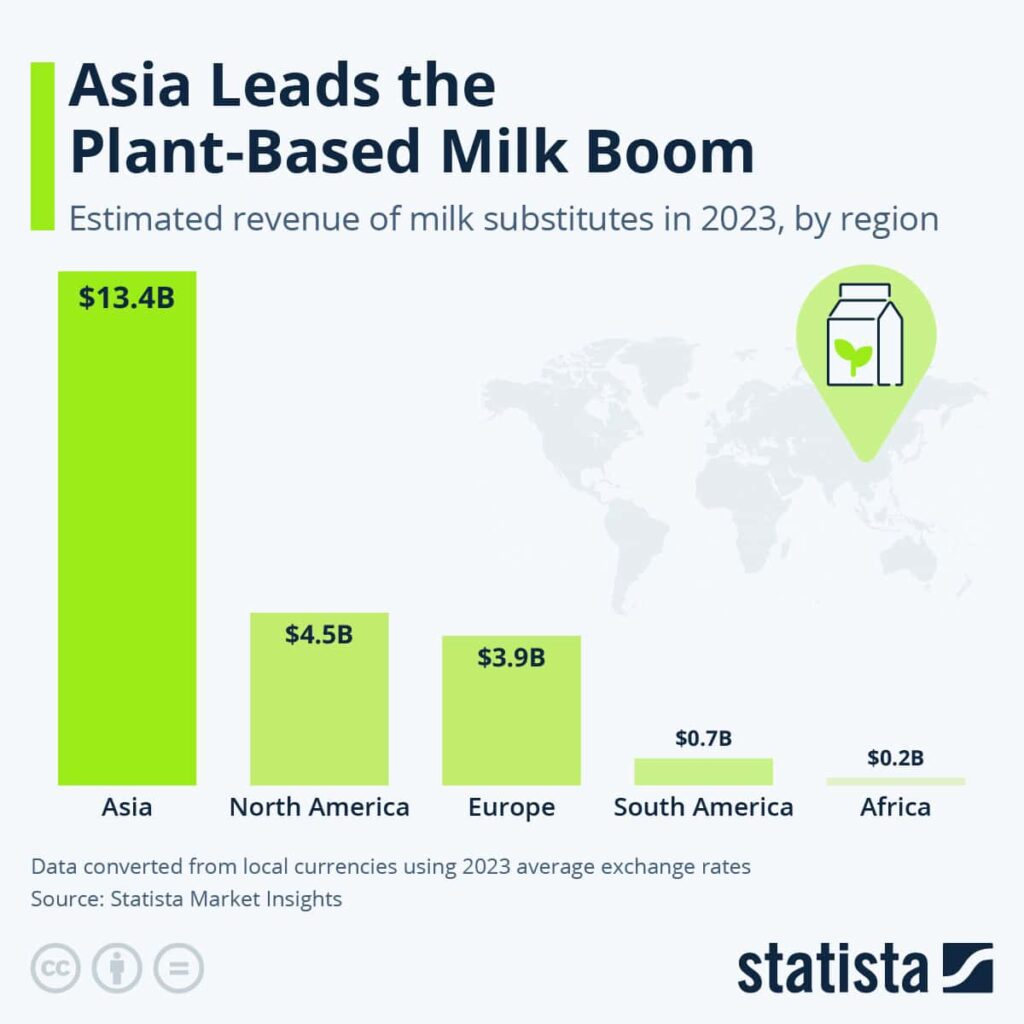
- Asia leads the worldwide market for milk alternatives, recording $13.4B in revenue in 2023. China alone accounts for $9.5B of this, making it the largest plant-based milk market.
- The global market for these products was valued by one research firm at $19.4B in 2023, with a CAGR of 7.6% until 2030, reaching $32.4B.
- In the US, milk alternatives account for 36% of the plant-based market, racking up $2.9B in sales, and 80% of all non-dairy milk sold is either almond or oat milk.
- Nearly half (44%) of US households bought plant-based milk in 2023, and eight in 10 came back for more. That being said, one in five Americans who purchase vegan alternatives also put cow’s milk in their shopping carts.
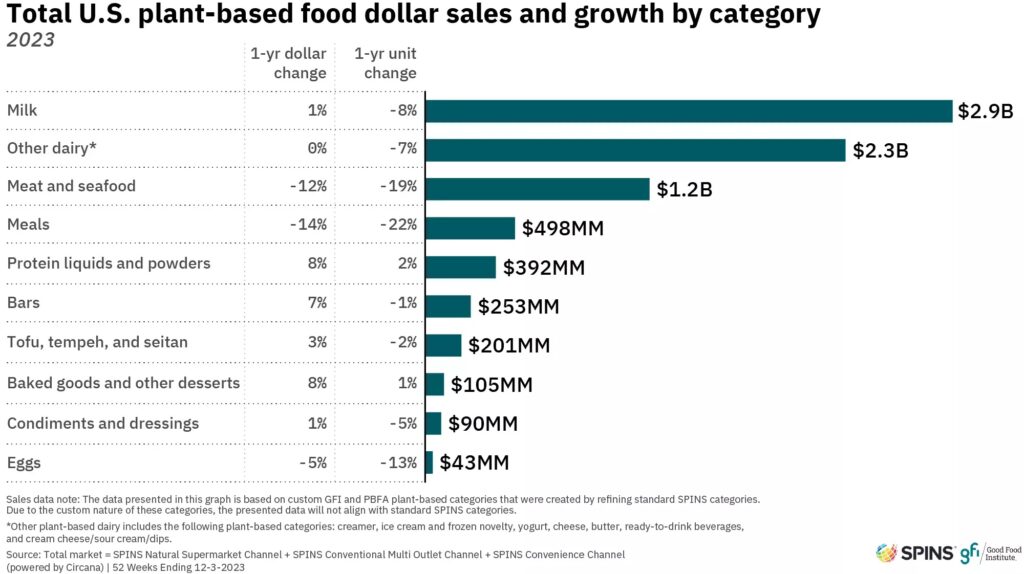
- Also in the US, 15% of all milk sales in the country are plant-based, a figure that rises to 41% in the natural channel.
- Meanwhile, foodservice operators are spending much more on plant-based milk than dairy – while they bought 8% more cow’s milk in 2023 (spending 7% more), their purchases of vegan alternatives grew by 18% in volume, representing a 21% higher spend.
- Across the Atlantic, milk alternatives make up 41% of all vegan sales in Europe’s biggest markets, reaching €2.2B in 2023.
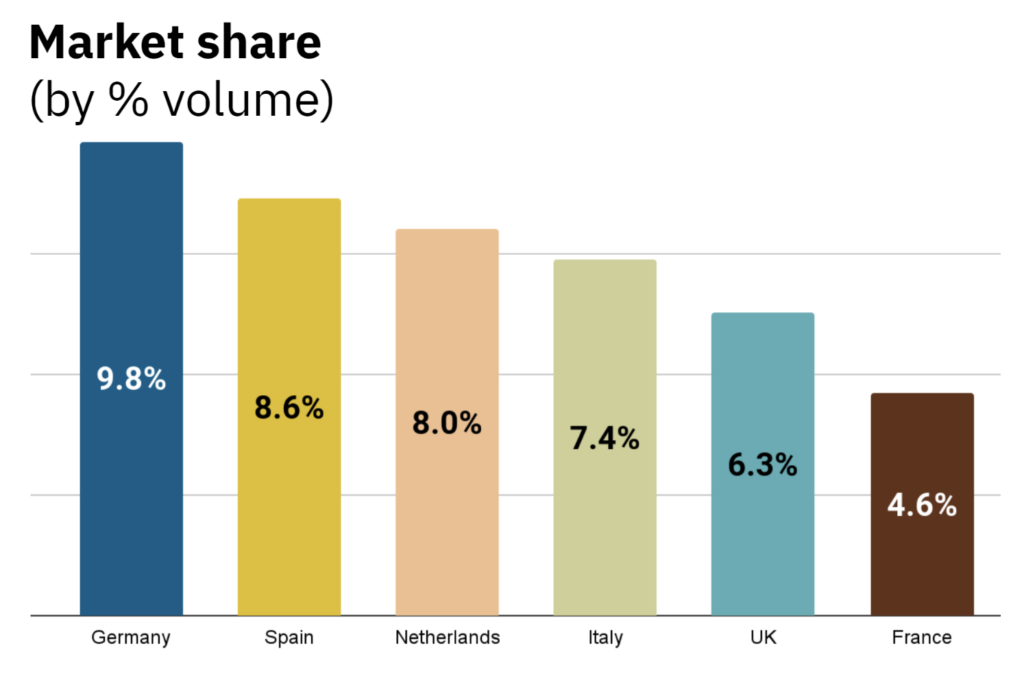
- Vegan alternatives take the highest market share of the milk market in Germany (10%), followed by Spain (8.6%) and the Netherlands (8%).
- In Germany, Spain, and the UK, more than 35% of households buy plant-based milk.
- A third of Americans still haven’t found a non-dairy product that meets all of their needs.
- While non-traditional milk alternatives only make up 5.5% of the alt-milk market in the US – their sales value grew by 6% in 2023 to reach $160M.
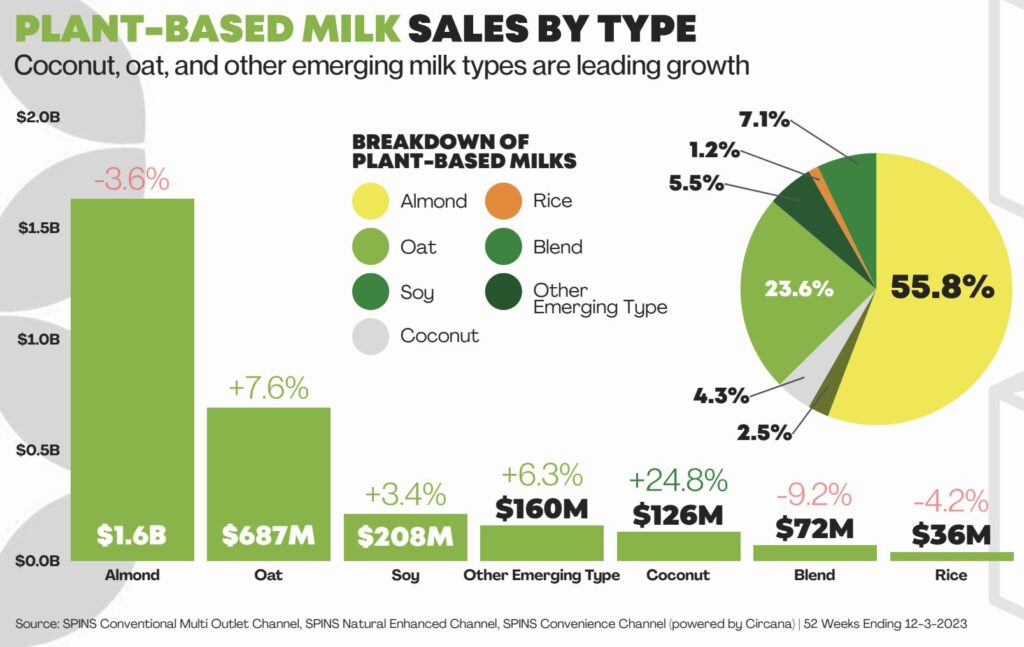
The problem: Why brands are looking beyond the established plant-based milks
- We need to quit dairy: Simply put, dairy is bad for the planet. Per litre, cow’s milk uses 11 times more land than oat milk and nearly 70% more water than almond milk (often criticised for being too water-intensive), while producing around thrice as many emissions as rice and soy milk.
- Current plant-based milks face multiple issues: As mentioned, almond milk suffers from a bad rep for needing too much water to grow, while oat milk has been through its own identity crisis with questions around seed oils and glucose levels. For many, coconut milk has too much fat, and rice milk too much sugar (it’s also the most carbon-intensive plant-based milk). Others, meanwhile, find soy milk’s flavour too beany or off-putting.
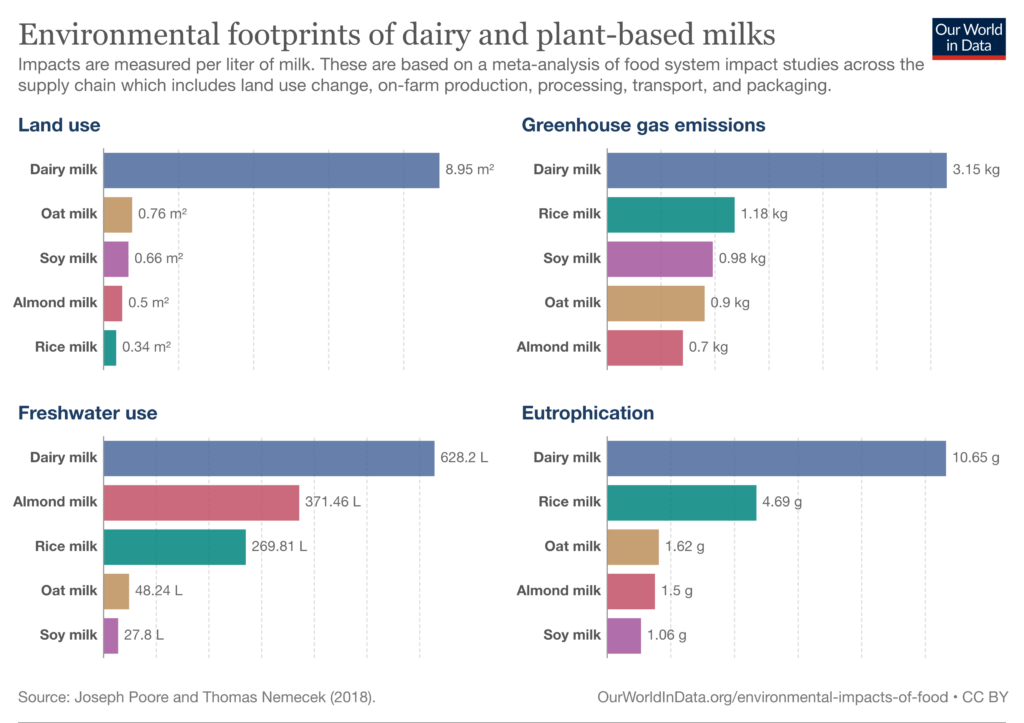
- Novelty helps: New innovations and food trends tend to go viral on social media, and brands that capitalise on these can win big. Offering alternatives to common plant-based milk options with attractive packaging and key functional benefits goes a long way.
- People are often unsatisfied with the texture and performance: While baristas may love oat milk, others don’t quite match up in terms of foamability. Moreover, barista milks don’t always taste great on their own. The opposite is true too – good-tasting milks often have a texture problem. There are very few one-size-fits-all products in the current market.
- Consumers want elevated nutrition: With health becoming more and more important to consumers, some brands could lose out. The demand for seed-oil-free milks is increasing, while being free from allergens like soy, nuts and gluten (from oats) is a major plus. And outside soy, protein is a key issue for the other common milk alternatives.
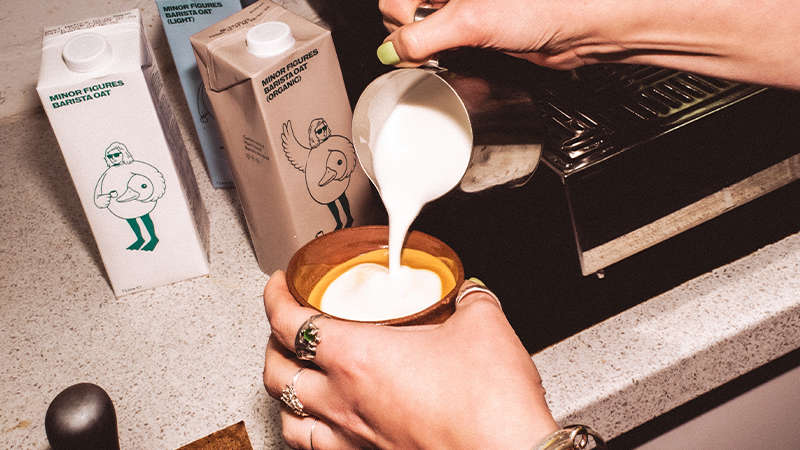
- There are some sustainability question marks: Dairy milk is, of course, as bad as it gets from a climate point of view. Meanwhile, almond and rice milk both use up a significant amount of water, and rice alone produces 2% of global carbon emissions, and 8% of the anthropogenic methane output. Soy, meanwhile, is often associated with Amazon deforestation (although most of the crop goes to animal feed).
- Users care about food waste: What do companies like Oatly, Alpro and Califia Farms do with the leftover pulp left from their production? The answers are varied, based on where a facility is located. What’s clear is there’s a major opportunity for brands to valorise the sidestream and upcycle ingredients destined to go to waste.
What are these emerging plant-based milks trying to solve?
As they look to gain ground and consumer trust, the new-ingredient plant-based milks are playing to a host of key trends.
Targeted nutrition
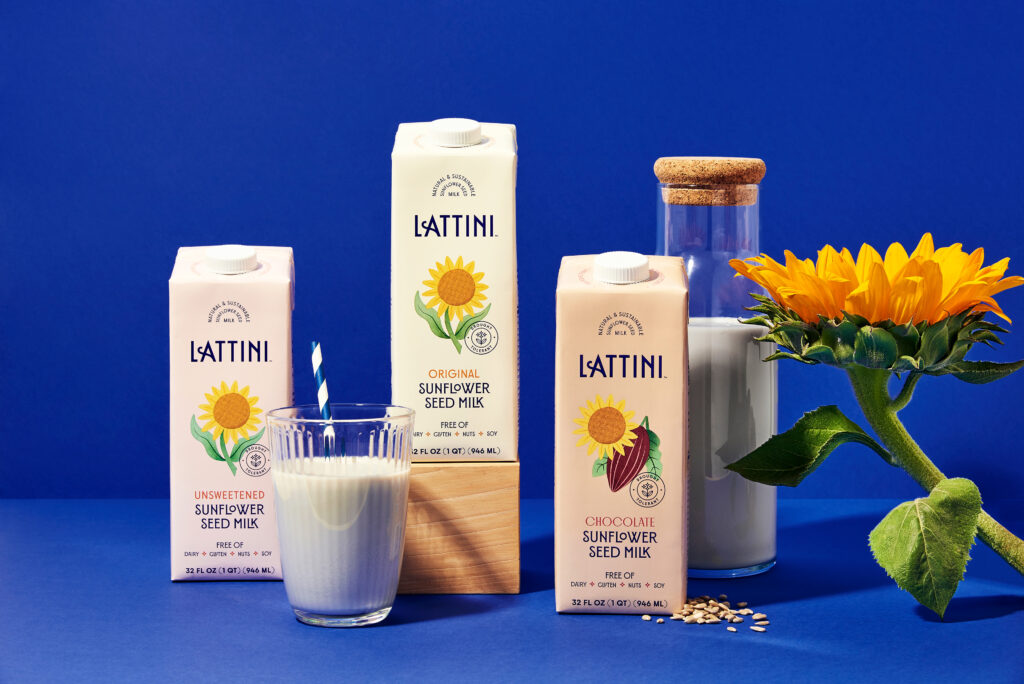
Some consumers aren’t satisfied with the lack of protein in traditional almond or oat milks. And while soy milk is a great source, many are put off by its flavour. Enter brands like Sproud and Ripple Foods, which are positioning pea milk as the ideal alternative. They have seen considerable success over the last couple of years, attracting investors and celebrities alike.
Brands like Bam and Niúke Foods, meanwhile, aren’t just focusing on the amount of protein, but also its composition. The former’s buckwheat milk contains all nine essential amino acids, as does the latter’s superfood quinoa milk, making both of them sources of complete protein.
Whole Moon blends soybeans with oats, almonds, as well as pistachios to provide complete protein. It also focuses on fibre, a macronutrient that has become prominent in people’s nutrition goals – 95% of Americans don’t consume enough fibre, despite its benefits for the gut. Another fibre-centric blend comes from Potina in the UK, which mixes whose banana pulp oat milks are geared towards children.
Others are providing allergen-free alternatives, which would speak to more than 225 million people globally. Lattini is catering to this population with its sunflower milk, which is free from the top nine allergens (which include soy, nuts, and gluten). Sweden’s Veg of Lund, meanwhile, makes potato milks under its Dug brand that are free from the top 14 allergens.
Elevated sustainability
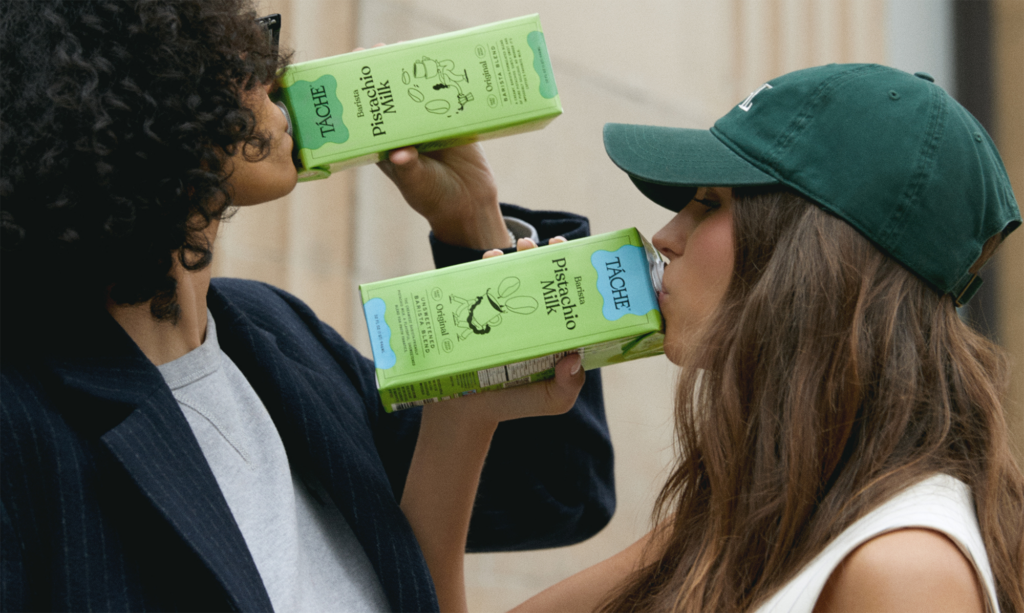
Companies are looking to offer superior environmental attributes to existing plant-based milks, which can be riddled with issues like excessive water use (like almond and rice milks) and deforestation (coconut and soy milks), as well as climate-change-induced supply shortages.
Bam and Lattini, for example, are touting buckwheat’s credentials as a regenerative crop, while Sproud has been found to be the most sustainable plant milk out there by CarbonCloud. Dug’s potato milk, meanwhile, is 56 times more water-efficient than almonds, and uses only half as much land as oats. Hemp milk is also among the greenest, a segment led by brands like Good Hemp, Soon, and Pacific Foods.
Sustainability is top of mind for the red-hot pistachio milks on the market. The US – where this segment is populated by Táche, Three Trees, and Elmhurst 1925 – has become the largest exporter of the premium nut in the last decade, thanks to California (where it’s the sixth most valuable commodity, directly behind almonds).
The growth is partly ascribed to the fact that pistachios grow on drought-resistant trees that require lower-quality water than almonds. And since they take around seven years to start producing decent harvests, California may not have even reached its full growing capacity from the trees planted in the last decade.
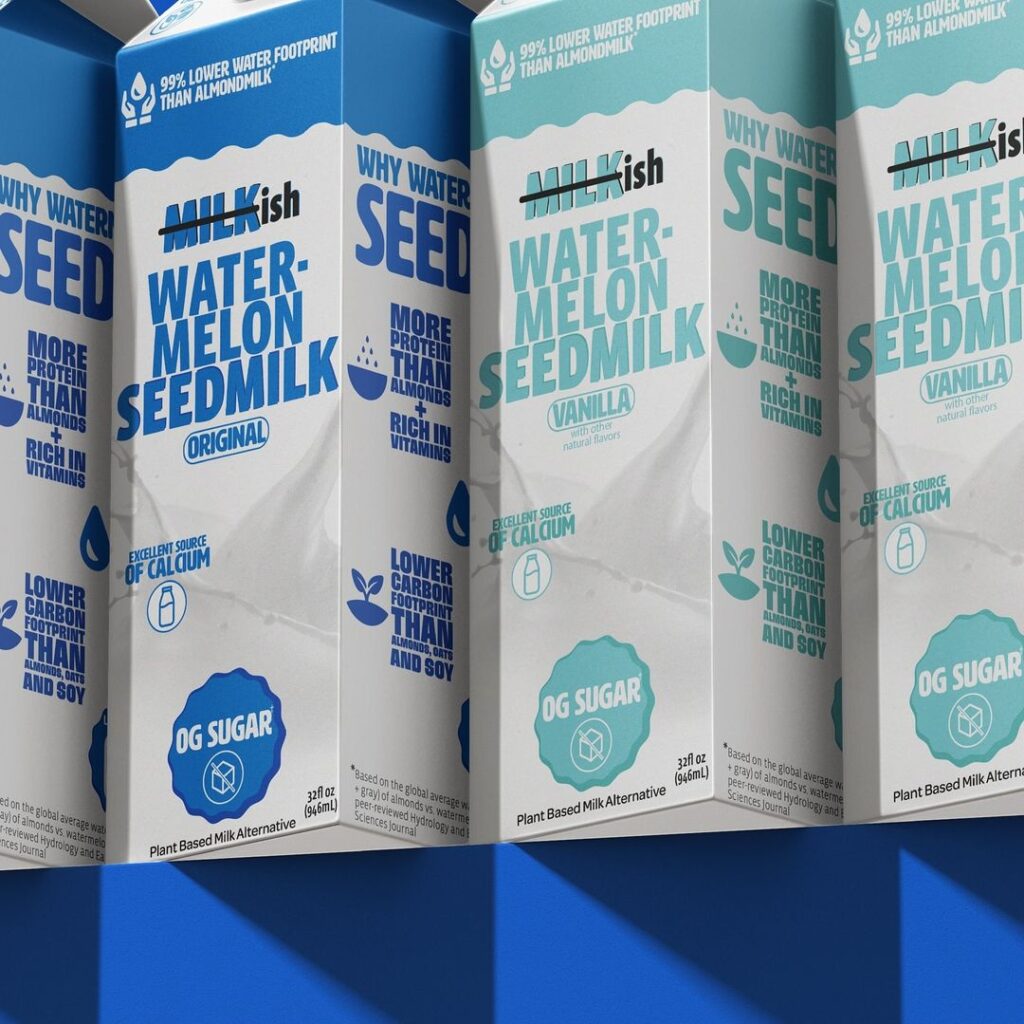
Meanwhile, Força Foods is explicitly taking on the mainstream categories with Milkish, its watermelon seed milk, which uses 99% less water than almond milk, 72% less than oats, and 53% less than soy. And it’s not just water waste that the product seeks to address – it’s putting a commonly wasted ingredient in watermelon seeds.
Austria’s Kern Tec is also making use of a food industry byproduct to transform the alt-milk landscape. Its apricot kernel milk is sold via its Wunderkern brand, and as part of offerings from dairy processor Bauer and Swiss retailer Coop.
Food waste accounts for 8-10% of global greenhouse gas emissions, and is recognised by Project Drawdown as the single most impactful thing people can do to fight the climate crisis and lower personal GHG emissions.
And with food waste in sharp focus in the US – 38% of all food produced in the country goes to waste, amounting to $473B – formats that use discarded ingredients and industry byproducts stand to win.
New taste experiences
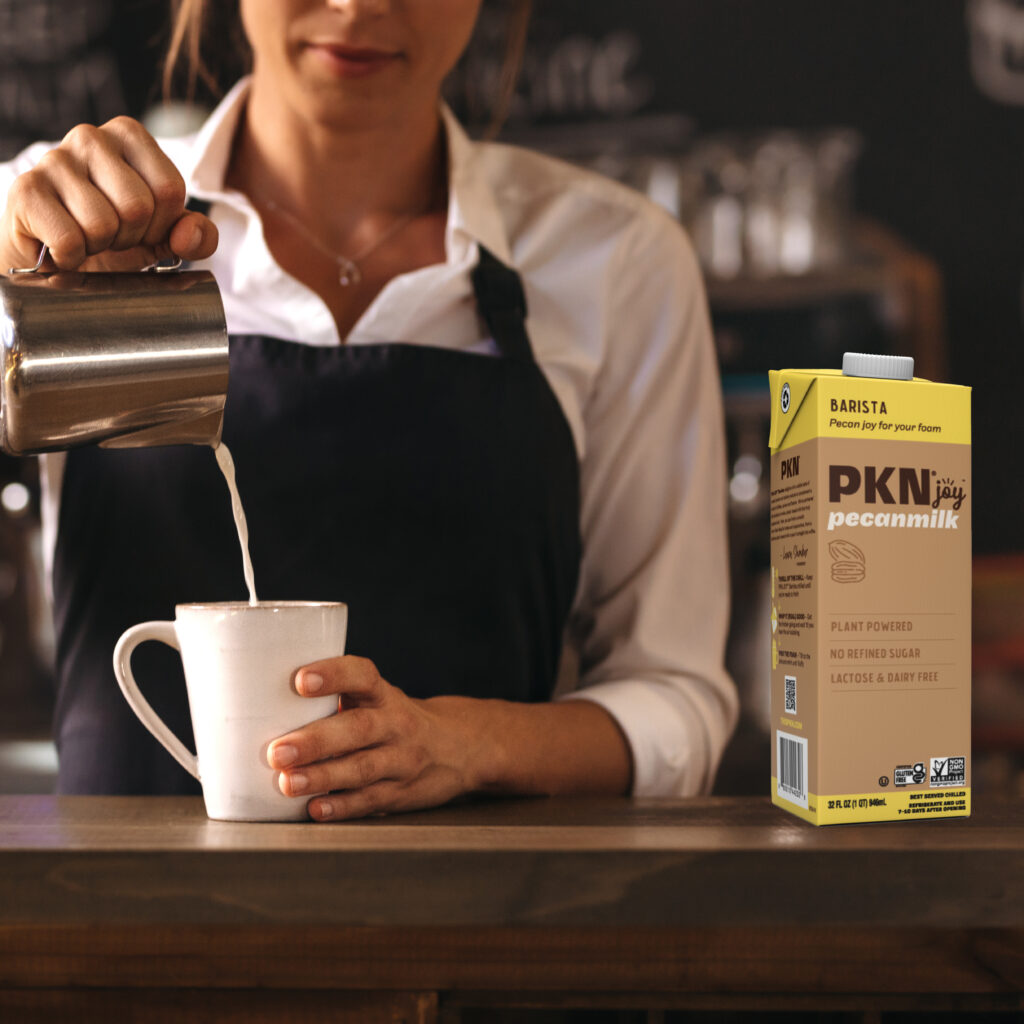
For some of the novel plant milks, it’s all about bringing a different flavour profile to the table. Niúke is banking on consumers’ curiosities with its indulgent peanut milk range, with a cocoa-infused offering that is said to taste like Reese’s Peanut Butter Cups.
The banana milk from Mooala Organic, meanwhile, is reminiscent of banana bread, according to the brand, helped by the addition of sunflower seeds and cinnamon.
And then there is the new crop of pecan milk brands, hoping to take the essence of one of America’s most beloved nuts to the liquid format. THIS PKN, Pecanamilk and Treehouse Naturals (in canned packaging no less) are spearheading this charge.
The emerging plant-based dairy category is vast and innovative – can it milk the market share of the established alternatives?

